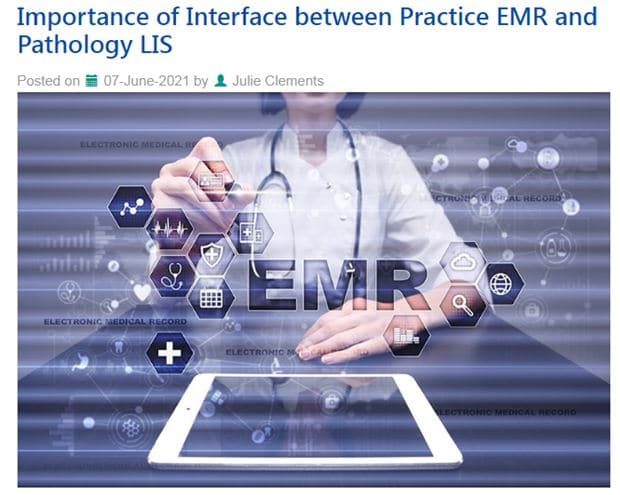The emergency department (ED) is a challenging and dynamic environment, with high volume, sick patients requiring time-critical care. EDs are also characterized by frequent distractions and interruptions. Outsourcing medical transcription is a practical strategy for emergency room physicians and staff to ensure accurate electronic medical record (EMR) documentation while focusing on care. Recent studies highlight the importance of such support.

Researchers from the University of Missouri-Columbia identified the two major workflow disruptors in emergency departments (EDs) as electronic medical record documentation and direct patient care. The study which was published in the International Journal of Human-Computer Interaction, suggests that the care team’s efficiency and patient care could be improved by making changes in ED workflow.
ED charts should communicate to other health care providers what was done in the ED, including diagnostic tests, medical decision making, and treatments, discussions with patients and caregivers, consultants’ recommendations, the patient’s follow-up, etc. Everything that happened during the encounter must be recorded in the chart. In addition to supporting continuity of care, comprehensive ED documentation can serve as the provider’s best defense in the event of a bad outcome, patient complaint or lawsuit. Good clear documentation may help chart reviewers gather data to help devise methods to improve care in the future. ED charts are also of great value in quality improvement review and utilization management.
However, ED documentation is challenging as it is different from charts for other specialties in many ways. A Clerkship Directors in Emergency Medicine (CDEM) report identifies these differences:
- Time constraints: In ED, time pressures limit the time available for documentation. As the physicians and nurses are busy, they may find it difficult to recall exactly what happened and when. Timely completion of charts is critical for accuracy.
- Each encounter needs to be a standalone one: CDEM points out that each ED visit is both a “new patient encounter” and a “final encounter”. As such, each visit must be treated an isolated one and providers need to document extensive pertinent past medical information, while managing the issue at hand and making plans for admission or follow up.
- Unique billing pattern: ED billing is different from that for other encounters. The charts are rated on a complexity level from 1-5, and each level has a list of minimum documentation requirements. Lack of comprehensive documentation can lead to under-coding and leave money on the table.
- Limited information: CDEM notes that, in ED, medical decision making is often based on limited information. The chart should reflect the physician’s thought processes.
- Rapport with patients: The ED chart is the only chance to reveal provider rapport with patient and family.
The University of Missouri researchers analyzed how brief interruptions affected nurses in the emergency department in the Mayo Clinic in Rochester, Minnesota. ED nurses’ most frequent tasks were categorized into eight, including direct care, documentation, social breaks, and other tasks including supervision and education. The study found that:
- Phone calls, colleagues, residents, doctors and relatives of the patient were the five most common interruptions to the nurses’ work.
- The interruptions in patient care activities resulted in a workload that was about two times higher than in a “non-interruption scenario”.
- EMR documentation along with patient care tasks made the workload was about four times higher than when there were no interruptions.
The team used this information to develop two simulation models–one to show how workflow is efficient when there were no interruptions and the other to show the potential effects of interruptions on tasks.
The researchers recommended that ED nurses should be trained to avoid answering questions or non-emergency phone calls while delivering direct care to patients and while engaged in EMR documentation. They also said that relatives of patients should allow the health care worker to perform critical duties without interruption.
Other studies have also analyzed the use of electronic documentation in the ED. Last year, the American Medical Association (AMA) reported on a study which found that the implementation of a custom electronic documentation system in one ED reduced patient throughput. The study, which was published in the Annals of Emergency Medicine, found that:
- The use of a custom electronic documentation system led to small but consistent increases in overall and discharge length of stay (LOS) in the ED.
- Though the increase in LOS was small, it still played a significant role in a high-throughput ED
- There was a 6.3-minute rise in LOS for patients treated and released and a 5.1-minute increase for discharged patients.
- These increases could lead to decreased patient satisfaction and delays in care for time-sensitive conditions
- There was no statistically significant change in time to disposition or LOS for admitted patients.
Extrapolated to the entire department, an “additional six minutes per patient encounter would add more than 16 hours per day for an ED serving 165 patients per day,” the researchers said. The findings of this study matched research which suggests that electronic documentation in the ED can be more time consuming than traditional paper charting.
The researchers called for new workflow strategies and technologies to mitigate these effects of implementing electronic documentation systems in the ED. The two specific interventions that the researchers identified as gaining prevalence are: the use of scribes and use of electronic dictation software. The study’s lead author stressed that both of these have the potential to improve completeness and efficiency of documentation and that they hoped to study the effects of these strategies in the future.
These recent studies emphasize the importance of documentation support for emergency room physicians and staff. Medical transcription outsourcing companies are well-positioned to provide such support. Established companies have teams of trained and experienced transcriptionists that can deliver accurate emergency room transcription service in custom turnaround time. Their services can go a long way in helping physicians maintain up-to-date electronic charts which is critical to improve efficiency and care.


